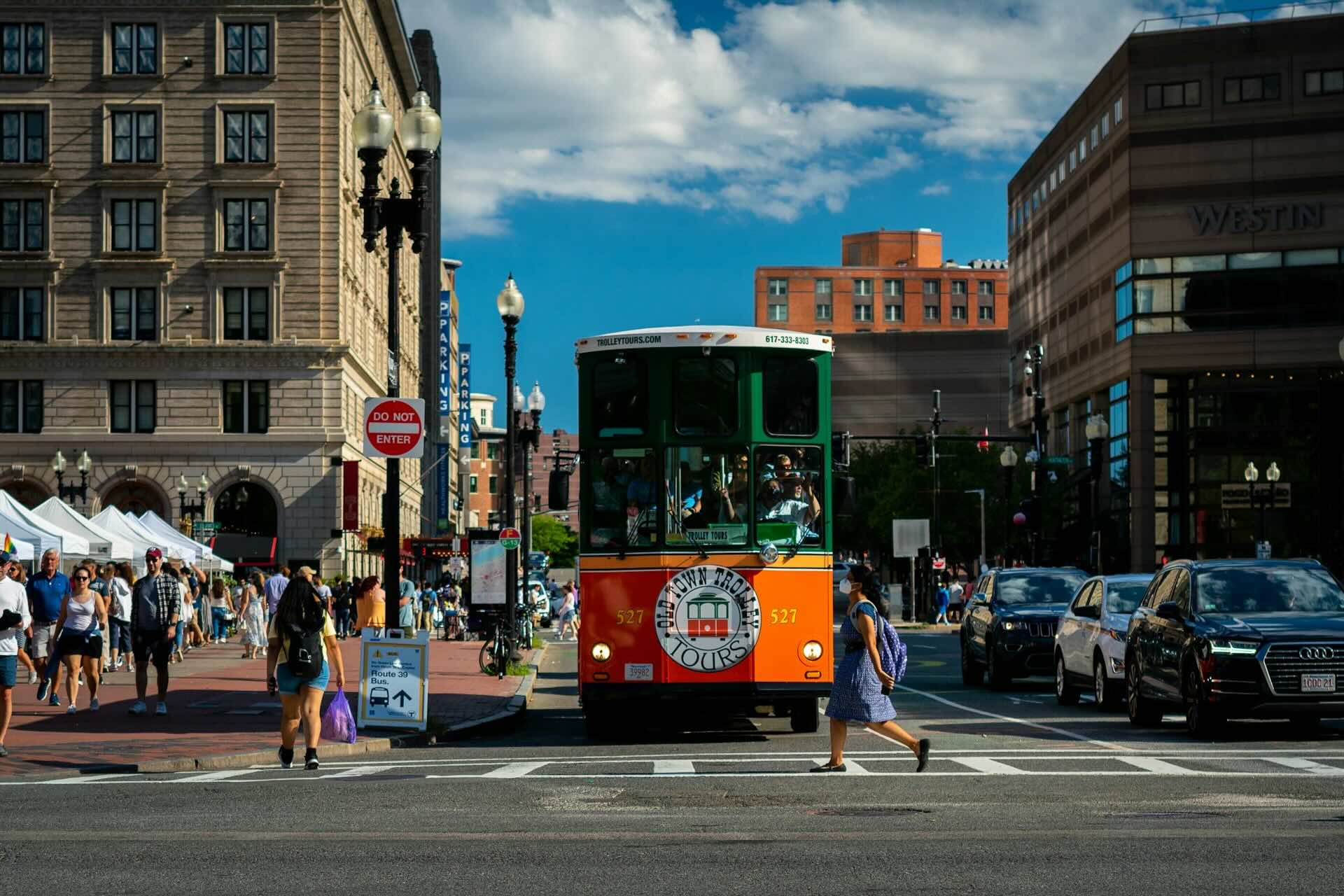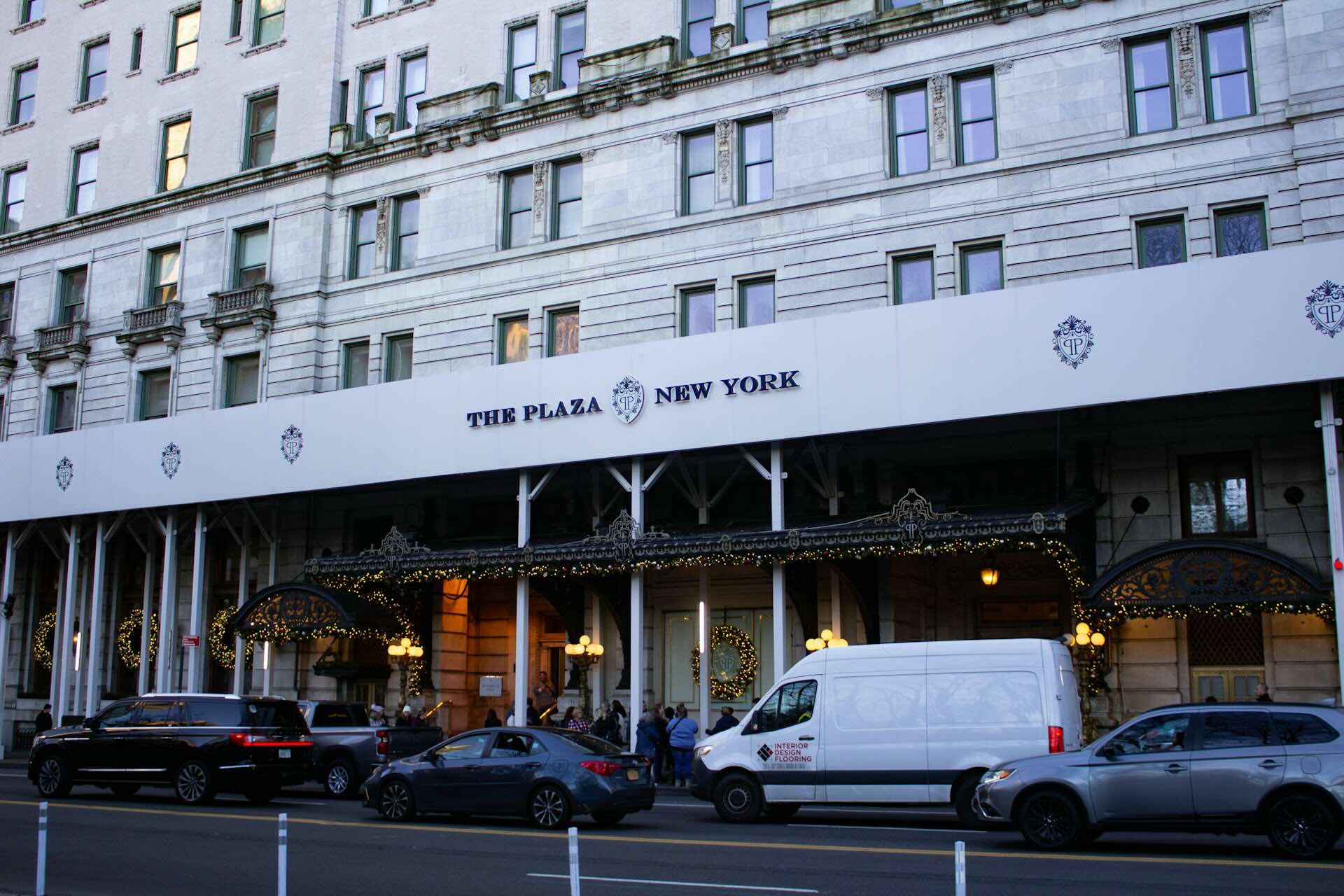Walking through a city reveals its true rhythm—the smells from local cafés, the chatter of street performers, the way neighborhoods blend into one another. Some cities invite exploration on foot better than others, offering accessible attractions, vibrant pedestrian districts, and safe, scenic streets. From coastal boardwalks to historic squares, these are the 10 most walkable U.S. cities to explore on foot.
New York City, New York
Few cities in the world can rival the walkability of New York. With a grid-based layout, endless sidewalks, and an iconic mix of landmarks, the city is best experienced by walking.
Why It’s Great for Walking
Every neighborhood feels like its own world. Stroll through Central Park in the morning, explore SoHo’s boutiques in the afternoon, and end the day walking across the Brooklyn Bridge as the skyline glows at sunset. The subway connects everything, so you can cover long distances quickly and spend the rest of the day discovering each area at street level.
Must-See Walking Routes
- Fifth Avenue for window shopping and architecture.
- The High Line, an elevated park that winds above Manhattan’s west side.
- Brooklyn Heights Promenade for stunning skyline views.
- Greenwich Village for cozy cafés and old-world charm.
San Francisco, California
With its mix of hills, history, and waterfront views, San Francisco is made for walking—if you don’t mind a little climb. Its compact size and diverse neighborhoods make it easy to explore without a car.
Why It’s Great for Walking
The city’s steep streets offer some of the best urban views in America. You can wander from Chinatown to North Beach in minutes, passing through colorful murals, independent shops, and delicious food stops. Walking here feels like traveling through several countries in one afternoon.
Must-See Walking Routes
- Fisherman’s Wharf to the Golden Gate Bridge.
- The Mission District for street art and culture.
- Lombard Street, the “crookedest street in the world.”
- Golden Gate Park for gardens, lakes, and museums.
Boston, Massachusetts
Boston’s compact size and historic layout make it one of the most pedestrian-friendly cities in the U.S. Founded in the 1600s, its winding streets connect centuries of American history.
Why It’s Great for Walking
Boston feels like a European city, with narrow lanes and cobblestone paths that encourage slow exploration. Most major attractions, from Harvard Square to the Freedom Trail, are within walking distance or accessible by the “T,” the city’s public transit system.
Must-See Walking Routes
- The Freedom Trail, a 2.5-mile route linking 16 historic sites.
- Beacon Hill for charming brownstones and gas-lit streets.
- Boston Common and the Public Garden for peaceful strolls.
- The Seaport District for waterfront views and modern architecture.
Chicago, Illinois
Chicago combines city energy with scenic beauty. Its downtown streets and lakefront paths make it one of the most walkable big cities in the Midwest.
Why It’s Great for Walking
The sidewalks are wide, the neighborhoods are distinct, and Lake Michigan is never far away. Walking in Chicago gives you easy access to world-class architecture, music, and food. From skyscrapers to sandy beaches, everything feels within reach.
Must-See Walking Routes
- The Chicago Riverwalk, lined with cafés and public art.
- Michigan Avenue’s Magnificent Mile for shopping and people-watching.
- Millennium Park to see “The Bean” and outdoor concerts.
- The Lakefront Trail, stretching for 18 miles along the water.
Washington, D.C.
The nation’s capital was designed for walking. Wide boulevards, open green spaces, and monuments make it easy to explore without needing transportation.
Why It’s Great for Walking
Washington, D.C., combines history and beauty in a way that few cities can match. The National Mall links iconic sites like the Lincoln Memorial, Capitol Building, and Smithsonian museums—all within a few miles. The city’s neighborhoods, from Georgetown to Dupont Circle, offer charming cafés and architecture that make every walk enjoyable.
Must-See Walking Routes
- The National Mall for monuments and museums.
- Georgetown Waterfront for scenic river views.
- Capitol Hill for tree-lined streets and markets.
- Embassy Row for international architecture and embassies.
Seattle, Washington
Seattle’s urban design encourages walking, especially around its downtown, waterfront, and artsy neighborhoods. The city’s mix of nature and innovation gives walkers the best of both worlds.
Why It’s Great for Walking
Seattle’s moderate climate means year-round walking weather, and the city’s compact downtown makes it easy to explore attractions like Pike Place Market, the Space Needle, and the waterfront without driving. You’ll also find plenty of green spaces and trails connecting neighborhoods.
Must-See Walking Routes
- Pike Place Market and the Seattle Waterfront.
- Discovery Park for forested trails and Puget Sound views.
- Capitol Hill for cafés, nightlife, and culture.
- Kerry Park for one of the best views of the city skyline.
Portland, Oregon
Portland is known for its creative culture, bike paths, and tree-lined streets that invite walking. It’s a city built for sustainability, with compact neighborhoods filled with local flavor.
Why It’s Great for Walking
Every block feels like a new discovery. Food carts, bookstores, breweries, and parks are always nearby. Portland’s strong pedestrian infrastructure and friendly atmosphere make it easy to wander without a plan.
Must-See Walking Routes
- The Pearl District for art galleries and cafés.
- Washington Park for gardens and trails.
- Hawthorne Boulevard for vintage shops and restaurants.
- Tom McCall Waterfront Park along the Willamette River.
Savannah, Georgia
Savannah’s beauty lies in its walkability. The city’s grid layout, shaded squares, and historical charm make it a walker’s paradise.
Why It’s Great for Walking
Every few blocks, you’ll come across one of Savannah’s 22 picturesque squares, each surrounded by oak trees draped in Spanish moss. The city feels timeless, and its slow pace invites visitors to linger.
Must-See Walking Routes
- The Historic District for architecture and gardens.
- Forsyth Park for its fountain and canopy of trees.
- River Street for cobblestone charm and local shops.
- Jones Street, often called the most beautiful street in America.
Charleston, South Carolina
Charleston blends Southern charm with seaside elegance, and the best way to experience it is on foot. Narrow streets, pastel homes, and ocean breezes make every stroll feel cinematic.
Why It’s Great for Walking
Charleston’s small size makes it perfect for pedestrians. The city’s mix of colonial buildings, coastal views, and culinary treasures make walking not only easy but irresistible.
Must-See Walking Routes
- The Battery promenade along the harbor.
- Rainbow Row for colorful historic homes.
- King Street for boutiques and local dining.
- Waterfront Park and its famous Pineapple Fountain.
Miami Beach, Florida
Miami Beach combines tropical weather, art deco architecture, and beachside walkways that make exploring on foot both scenic and stylish.
Why It’s Great for Walking
The entire city encourages outdoor living. Ocean Drive and Lincoln Road are lined with shops, restaurants, and galleries, while the Miami Beach Boardwalk stretches for miles along the Atlantic. You can spend an entire day exploring by foot while enjoying the warm sea breeze.
Must-See Walking Routes
- Ocean Drive for classic Art Deco buildings.
- Lincoln Road Mall for open-air shopping.
- Miami Beach Boardwalk for sunrise or sunset walks.
- South Pointe Park for panoramic ocean views.
Why Walking Makes Travel More Meaningful
Walking turns travel into connection. You notice the details—a local greeting, the smell of fresh bread, the sound of street music. It’s slower, more personal, and far more rewarding than simply moving from one attraction to another.
Each of these cities invites travelers to slow down, discover neighborhoods up close, and feel the rhythm of local life. With TravelPal, planning a walking-friendly itinerary becomes simple. From pedestrian zones to scenic trails, TravelPal helps travelers design routes that bring each city to life, step by step.
Plan a trip to America’s most walkable cities at TravelPal.ai

